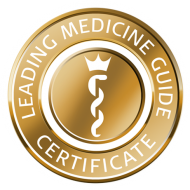Recommended specialists
Article overview
Bronchology - Further information
In the search for specialists in bronchial medicine you will find medical experts for treatment and therapy in the speciality of pulmonology and bronchology. You have bronchial asthma, chronic bronchitis or suffer from chronic obstructive pulmonary disease (COPD) and are seeking an experienced specialist in pulmonary medicine? Here you will find selected specialists in the field of pulmonary medicine.
Specialist for respiratory medicine
A specialist in respiratory medicine specializes in the prevention, diagnosis and treatment of diseases of the respiratory system. The best known respiratory diseases that are diagnosed and treated in the context of respiratory medicine include bronchial asthma, chronic obstructive pulmonary disease (COPD), chronic bronchitis and chronic cough. Other frequently occurring diseases in respiratory medicine are pneumonia, pulmonary fibrosis, sleep-related breathing disorders and allergic respiratory diseases.
In addition to professional surgical knowledge, respiratory specialists also have knowledge of diagnostic procedures, as well as disease-related pre- and post-diagnostic treatment. To become a specialist in respiratory medicine a physician must complete several years of postgraduate training.
Therapeutic range of services of respiratory medicine
The therapeutic range of services of respiratory medicine comprises essentially bronchoscopy, thoracoscopy, training in COPD, hyposensitization for allergies and asthma training.






